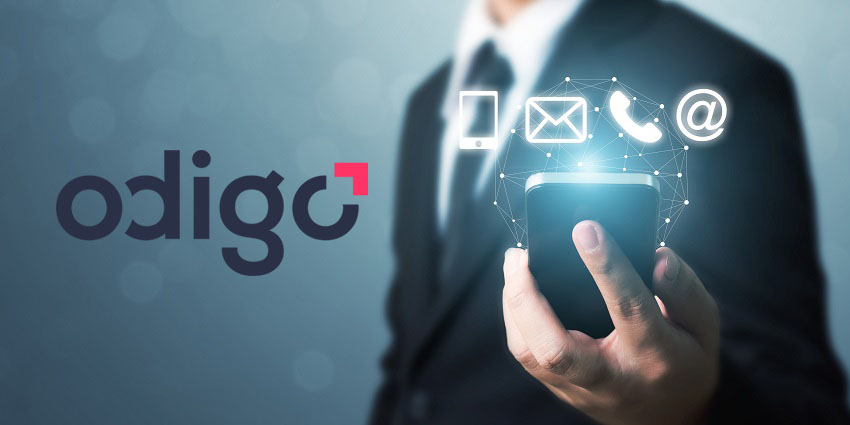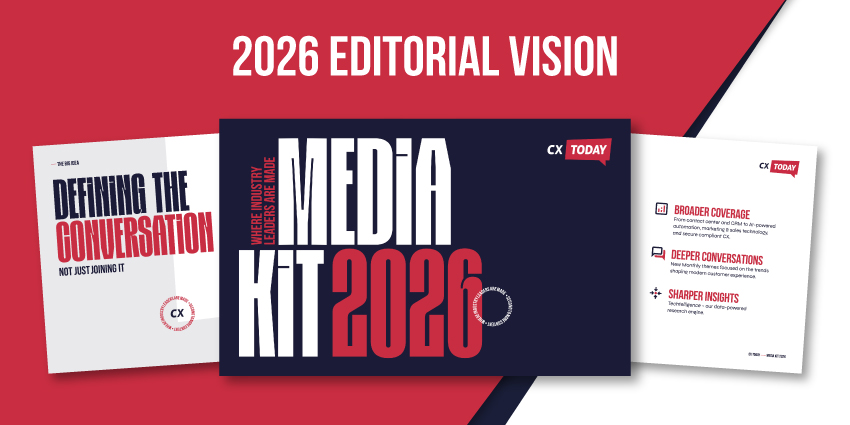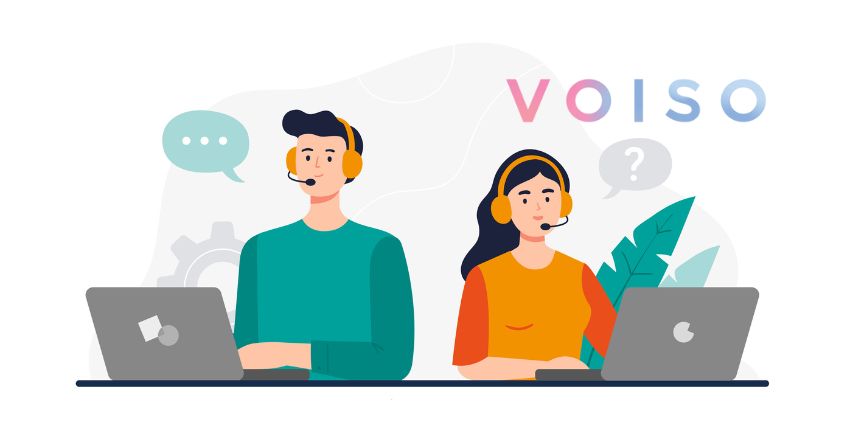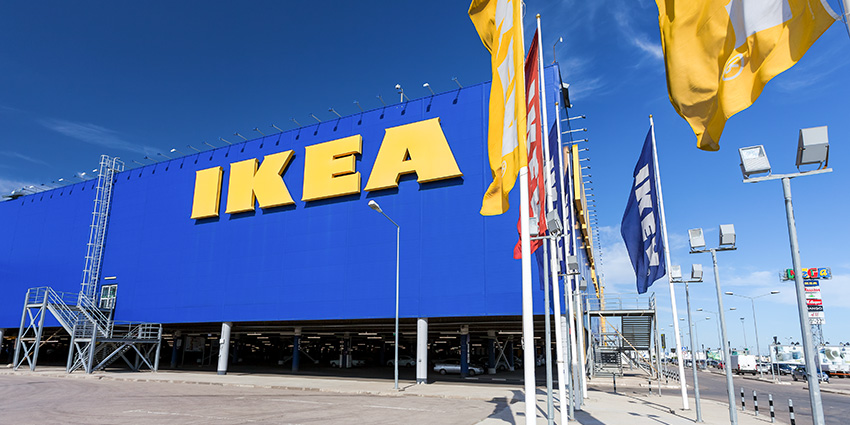Few customers appear to have a preferred channel for all customer queries, suggests new CCMA research.
The study, sponsored by prominent CCaaS provider Odigo, implies that customer preferences vary greatly, depending on the query type.
Such a conclusion is clear from the following chart, which highlights how these preferences differ across many familiar demand drivers.
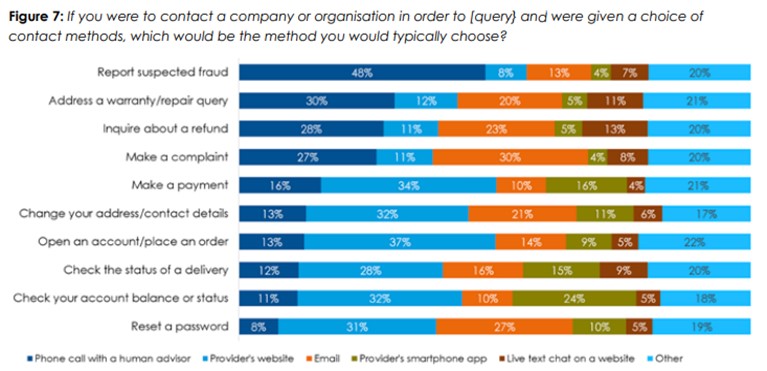
The light blue bars represent “other channels.” These include SMS, messaging apps, bot-driven chat, social media, and in-store service.
Yet, these channels appear secondary. Indeed, 80 percent of consumers’ first-choice preference – across all these contact reasons – centres around five channels: the phone, email, website, in-app, and live chat.
Phone, Email, and Online Service Leads the Way
Unsurprisingly, the telephone is the number one choice for many when issues are complex, sensitive, and urgent.
Reporting suspected fraud (48 percent), warranty/repair queries (30 percent), and refund queries (28 percent) are all prime examples of this trend.
Elsewhere, email remains popular, despite the rise of other digital channels – such as live chat, social media, and messaging.
Perhaps due in part to its perceived simplicity, email is the preferred channel for customers making complaints (30 percent) and resetting passwords (27 percent).
Unsurprisingly, self-service through the website has the highest share of consumer preference across each of the other contact reasons.
Meanwhile, a customer service app is popular for checking an account balance (24 percent), making payments (16 percent), and seeking delivery updates (15 percent).
Furthermore, many customers also enjoy human-led live chat for refund requests (13 percent) and warranty/repair queries (11 percent).
Interestingly, the report differentiates human- and bot-lead live chat. In these two cases, a sensitive human touch seems necessary.
Yet, there are quick wins that contact centres can secure by adding AI into journeys across each of these channels.
Richard Gregory Senior Account Director at Odigo, makes this point, stating:
What we do at Odigo is review the entire customer journey with our great, experienced team of consultants and work out where the quick wins are. These might not incur much time or cost – as much of the process is re-engineering and improving data access rather than implementing new technology. Then, we build a platform for change over time.
Having this central platform is crucial. It enables agents – both human and virtual – to source information across all contact channels to deliver contextual, personalized service experiences.
3 Takeaways from Contact Center Leaders
Interestingly, the report introduces the thoughts of several customer service leaders, sharing their perspectives on how the changing channel mix is impacting their operations.
By assessing their comments, three critical takeaways come to light.
1. Customers Are Desperate for a Human Touch
Viv Kelly, Head of Customer Service at Shell Energy, urges us to consider the difficulties many customers and agents face in the current economic climate. She states:
With the cost of living increasing at such a rate, there is more financial urgency. I think we will see more heightened pressure. For example, a real need to sort a refund.
As such, contact centres can expect to deal with more vulnerable customers who require support that goes beyond a transaction in itself.
Having the people available and training them to handle challenging conversations is critical to providing this human touch. Yet, brands must also reconsider their AI transformation strategies.
As Carl Bromley, Head of Customer Experience, Ageas Group, says:
On the back of customer feedback, we have introduced voicebots and chatbots to deal with the simpler queries. If you don’t get this right, customers will call you, which contradicts the process and can cause frustration. It’s important to get the balance right and give customers what they want.
Building escalation paths into these bot-driven experiences helps to achieve this balance. After all, it enables customers to reach out to a human agent whenever they desire. Meanwhile, the business can automate a significant chunk of the conversation at the very least.
2. The Prevalence of Email and Chat Is Perhaps Concerning
Despite becoming stalwart channels within many contact centre operations, some service leaders have voiced their concern regarding the continued popularity of email and voice.
One such leader is Donna Czyzewski, Head of Customer Contact at IAG. She states:
I’m questioning the popularity of email. We’ve found email to be one of the worst channels for contact resolution because it takes at least three exchanges before you actually resolve something.
Indeed, email conversations can drag on, leaving customers in the lurch. Yet, chat – an alternative option – also brings issues of its own.
As Paul Bentley, Development Centre Manager at Loop, adds: “We found webchat was inefficient and struggled to get the best customer journey around some of the more complex customer queries. It also drove lots of contacts that we wouldn’t have normally received.
Queries such as opening times that people weren’t likely to call for because of queues to get through on the phone became easy to do, and that drove lots of contacts that weren’t necessarily adding value to the customer.
Unfortunately, this problem persists whenever a contact centre opens a new channel, as they engage with a new audience. For overall engagement, this is great but challenging from a workload perspective.
As such, contact centres must consider how to influence channel choice positively. This does not include implementing a digital deflection strategy that forces customers down particular paths.
Instead, contact centres can consider coaching agents the best channels for particular queries – in terms of customer satisfaction and handling times – and encouraging them to suggest a channel shift. Better website signposting may also help.
3. Remember to Consider Variances Between Industries
While the statistics from the CCMA report provide valuable insights to guide a channel strategy, remember that these figures will swing significantly from one industry to another.
Making this point, Val Wonnacott, Business Improvement Manager at The AA, says: “It depends on the business and how frequently the customer interacts with you. Some suppliers I contact once a year, others I may need to contact more frequently.”
My banking app will always be on my phone. But somebody who I just change things with every couple of years, I’ll not keep their app on my phone.
For this reason, it is best practice to network, keep tabs on which channels competitors are offering, and engage with customers to uncover whether a potential channel is an attractive option.
Also, consider how the channel pairs with prominent demand drivers. Following this approach will allow businesses to create a strategy that predicts intent and leads customers down the optimal resolution path.
Uncover More Expert Perspectives On the Latest News
Odigo maintains close ties with the CCMA, engaging with industry leaders outside its extensive client base to keep its finger well and truly on the pulse of the customer service space.
As such, it releases many reports like this, harnessing expert perspectives on the latest industry trends and sharing them with a broader audience.
Another excellent example is its recent research into how companies can best support vulnerable customers. Check it out here.
